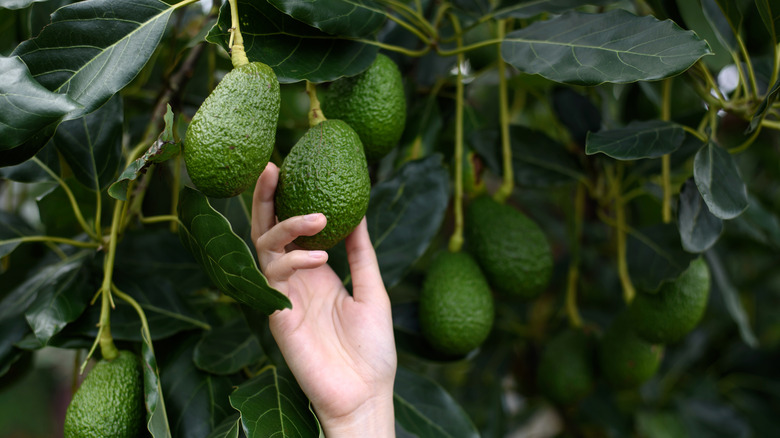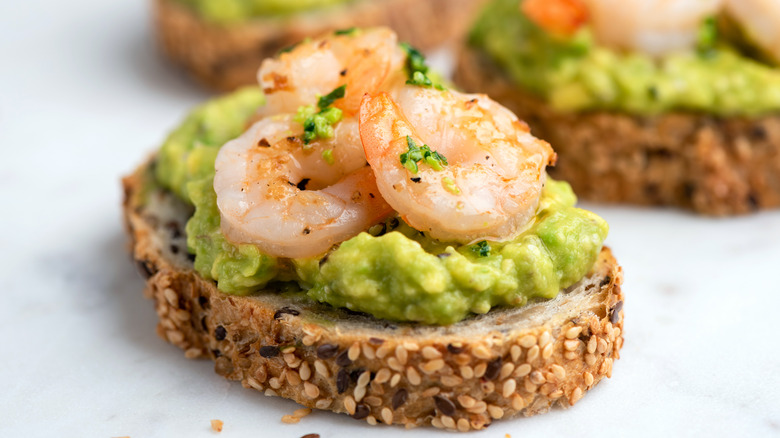The Reason America Stopped Calling Avocados Alligator Pears
William Shakespeare's Juliet may have argued that "a rose by any other name would smell as sweet," but it turns out that an avocado by any other name wouldn't — and didn't — sell as well. The fruit (yes, an avocado is actually a fruit) we love to spread over toast and enjoy in guacamole hasn't always gone by the name we use today.
The avocado, according to NPR, had been a part of Central and South American diets since 500 B.C. but it had gone by the name "ahuacate", a term Scientific American explains derived from the Aztec word "ahuacacuahatl". Avocados were first planted in Florida in 1833 and in California in 1856, and NPR tells us they were in such high demand in the U.S. by 1914 that buyers would pay as much as $1 apiece for the fruit. Avocado growers realized the opportunity for enormous growth and profitability, but there was one big problem.
Consumers didn't like the name
Before we called them avocados, the fruits were commonly called ahuacate, a word NPR said Americans found difficult to pronounce. In addition, the word happens to be the same word in Aztec for testicle, which some consumers, strangely enough, found less-than-appetizing. The avocado's other moniker was alligator pear, which Scientific American explains described the fruit's shape and its bumpy skin.
So it was in 1914 that a group of farmers decided to rename the fruit to make it more widely marketable. They settled on the name avocado, which referenced the fruit's Aztec roots, and the group of farmers organized the California Avocado Association. Did the marketing strategy work? The Agricultural Marketing Research Center tells us the 2020 U.S. avocado production weighed 206,610 tons and was worth $426 million. If you feel nostalgic for the alligator pear of yore, you can enjoy Georgia O'Keefe's 1923 painting titled "Alligator Pears," and you can certainly find reasons to consume more ahuacate.

